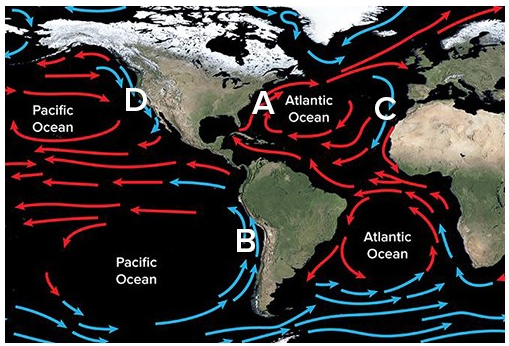Explain the differences in air motion within a low pressure system and a high pressure system
Horizontal pressure differences create a force that starts the air moving from higher pressure toward lower pressure. Because of the earth's rotation, the winds are deflected from their path toward the right in the Northern Hemisphere. This deflection causes the winds to blow clockwise and outward from the center of the highs, and counterclockwise and inward toward the center of the lows. As the surface air spins into the low, it flows together and is forced upward, like toothpaste squeezed out of an upward-pointing tube. The rising air cools, and the water vapor in the air condenses into clouds. In regions of high pressure, skies are generally clear. As the surface air flows outward away from the center of a high, air sinking from above must replace the laterally spreading surface air. Since sinking air does not usually produce clouds, we find generally clear skies and fair weather associated with the regions of high atmospheric pressure.
You might also like to view...
Which of the following shows the location of the Gulf Stream?

A) A
B) B
C) C
D) D
Describe what trenches and island arcs are. Why are these features linked with large earthquakes and
tsunamis? What will be an ideal response?
community vs ecosystem
What will be an ideal response?
In industrialized nations, the two most deadly sources of indoor pollution are ________
A) pesticides and cigarette smoke B) radiation from electronic equipment and pesticides C) pesticides and cleaning agents D) radon and cigarette smoke E) synthetic furniture materials and radiation from electronic equipment